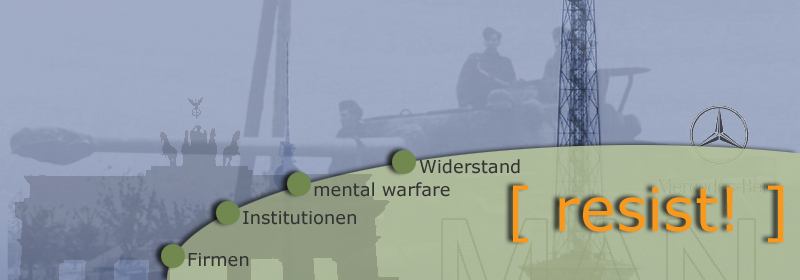Herbert Baum Group
On May 18, 1942, activists from Jewish and communist resistance groups tried to destroy the Nazi propaganda exhibition „The Soviet Paradise“. A memorial on the sidewalk of the northeastern side of the so called „Lustgarten“ (next to the Berlin Cathedral and the Karl-Liebknecht-Str.) reminds us of the attempted fire bombing. The memorial was created in the German Democratic Republic (GDR) in 1981. It reminds us of this act of resistance with the following words: We will not forget the brave acts and pertinacity of the antifascist resistance group led by the young communist Herbert Baum. Forever connected with the Soviet Union in friendship.
In March 2001 two glass plates were added to the memorial. In a variety of languages the first plate explains that many members of the resistance group, which tried to fire bomb the exhibition were Jewish. The second plate lists the names of 34 women and men, who suffered repression, were arrested and executed in the aftermath of the attempted fire bombing.
The 34 names represent the biographies of a young man or women who were between 20 and 30 years old. Some of them had known each other for quite some time, as they had been either members of children’s and young people’s Jewish groups or members of the communist youth organization (KJVD). Being both leftists and Jews, they had been subject to increasing discrimination, exclusion from societal and political life and persecution from the early 1930s. Later they were increasingly in danger of being deported. Already in the 1930s they were forced to carry out all their political work illegally. The Nazis massively limited the possibilities of Jewish people regarding employment and training. By the end of 1938 Jewish people had to perform forced labour, first in government enterprise and then increasingly in the arms industry. Some of the mentioned young adults had to work in Berlin in a factory called Siemens & Schuckert (electrical engineering), including the married couple Marianne and Herbert Baum. They tried to establish an illegal network between some Jewish and communist activists in this factory and became the so called „Herbert-Baum-Gruppe“. They met to read political texts and to analyse and discuss the political situation.
The propaganda exhibition „The Soviet Paradise“ was opened by the Undersecretary of the Ministry of Propaganda on May 8, 1942 in the „Lustgarten“, between the Old Museum and the castle.
The aim of the exhibition „The Soviet Paradise“ was to create a feeling of superiority regarding the own so called „aryan race“ and the german nation, as opposed to the „uncivilized and primitive“ peoples of the Soviet Union. The exhibition included modern visual propaganda, photos, paintings and recreated living- and working spaces and a (false) model of a neighborhood in Minsk, which showed the poverty, squalor and hopelessness of life in the Soviet Union. Additionally, the „german“ population was supposed to realize how much danger and poverty they could expect under Soviet leadership, if Nazi Germany was to lose the war. The enemy was presented as uncivilized and worthless, and it was suggested that the enemy was a threat to one’s own life. At this time the enthusiasm for war was decreasing due to heavy losses amongst the population. This very population was supposed to be rekindled. The willingness of young German men to murder and lose their lives for „Führer“ and „Fatherland“, for the good of the family and against the „Bolshevik danger“ was supposed to be increased through the exhibition.
Enraged about this war propaganda, provoked by the way, in which the Soviet Union was portrayed, and angry about being excluded and persecuted as Jews, some of the people in the so-called Herbert-Baum Group and a group of friends around the communist Werner Steinbrinck developed the idea of a flyer action as a form of counter propaganda. During the planning phase, this idea was extended and a fire bombing was planned, in order to sabotage the propaganda show entirely.
Unfortunately the firebombing on May 18, 1942 was not successful. The exhibition hardly suffered any damage. In the following weeks, almost all of the members of the Herbert-Baum Group and the communists around Werner Steinbrinck were arrested. Additionally, on May 27 and 28, 500 Berlin Jews were arrested. 250 were immediately shot and 250 were deported to concentration camp Sachsenhausen. The political prisoners, which were involved in the fire bombing, or which were supposedly part of the Herbert-Baum Group were all executed in Ploetzensee the same year. Herbert Baum himself had died only days after his arrest, on June 11, 1942, in his cell in Moabit, under circumstances that were never revealed.
The exhibition „The Soviet Paradise“ is an example of how propaganda and ideology is used, in order to create and prolong the willingness to fight wars and give sacrifices.
In war, truth is the first casualty. Today we also face a scenario, in which societal and state discourse, scientific studies and ideologically colored threat scenarios are used in order to increase the willingness to fight wars.

